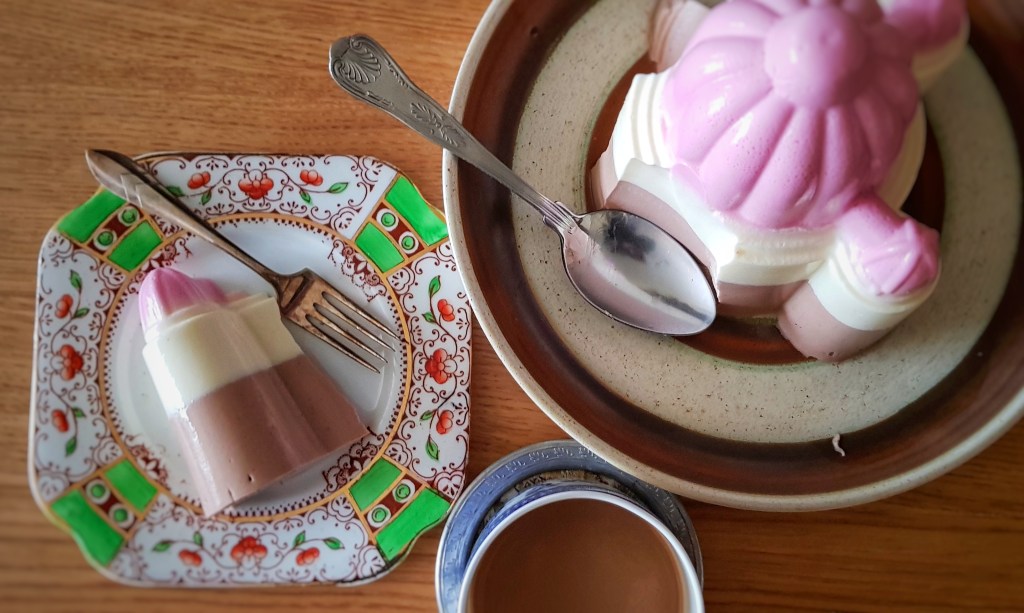
Subscribe to get access
This post and it’s accompanying podcast episode are for £3 monthly subscribers. If you would like to become a subscriber and access this post and all the other premium content on the blog click the link below:

This post and it’s accompanying podcast episode are for £3 monthly subscribers. If you would like to become a subscriber and access this post and all the other premium content on the blog click the link below:
Last post I gave you a potted history of sowans, the Scots drink or flummery made from the starch left clinging to oat husks after the oats were threshed after harvest. Well, since then I have been doing a little experimenting, and have – I think – successfully made some. It’s taken a couple of goes, but I reckon I have a good practical method for you, should you fancy having a crack of making it yourself.
In the main, oat husks are used, but I saw other accounts of sowans making and I saw that some recipes used a proportion of whole oat groats, oatmeal or porridge oats. Other recipes – and it turns out that a similar dish in Wales is made1,2 – using buttermilk or whey instead of water to kickstart the fermentation. One modern recipe by Scotland-based chef Craig Grozier uses whey and salt3; the salt providing an excellent environment for the lactic acid bacteria present in the oats and the whey, hastening the fermentation and ensuring the sowans would not be infiltrated by some other spoilage organism. I’ve made sourdough starters enough times to trust the oats and water to work their own magic, to test this, I designed a simple experiment with three conditions:
I left the sowans to ferment for seven days, after which I tasted the liquid and it was far too sour for my liking, but I was impressed with how well it all worked: the sour-sweet oaty smell give off was certainly not unpleasant. It turned out that actually one is not supposed to drink the sour liquid: it should be poured away and fresh water mixed in.4 I was rather surprised as to how much starch came out of the husks.
Emboldened, I tried again, this time with two conditions: one with water and organic oatmeal and the other exactly the same, except for a couple of tablespoons of the sour liquid from the first experiment, to give the sowans a boost. Note I didn’t use oat husks, and there are three reasons for this:
I gave it a shorter fermentation time and the results were great: sowans as a drink, i.e. the sour water decantated off and the sediment mixed into fresh water. It was tart, surprisingly sweet (especially the one with the starter) and had a good, raw oat flavour. It would be great to use in a smoothie, or just sweetened with a little maple or agave syrup. However it was the settled sediment that I was more interested in and was looking forward to making the sowans porridge and the cold flummery.
If you like the blogs and podcast I produce, please consider treating me to a virtual coffee or pint, or even a £3 monthly subscription: follow this link for more information.
I was very pleased with the results, and I present them for you below. Whether you make the drink, the porridge or the flummery, the basic recipe is the same. It makes 550ml of drinking sowans or around 450 ml of porridge or flummery. I ate the porridge with treacle and milk, and I ate the flummery with raspberry jam, and I enjoyed them both. I think the flummery would be great flavoured with sweetened raspberry purée or orange flower water.
Basic ingredients:
150 g organic medium oatmeal
650 ml cool water
2 tbs of the clear liquid from a previous batch (optional)
For sowans porridge or flummery:
2 dsp sugar
½ tsp salt
A smidge of oil (for the flummery)
Place the oats, water and starter (if using) into a tub or jar and stir well. Cover the jar with a square of fabric secured with an elastic band. Leave to ferment for four days, giving the mixture a good stir every other day: give the liquid a sniff or a taste; it needs to have a definite acid tang.
When you are ready to strain your sowans, set a fine sieve or a colander lined with a sheet of muslin over a bowl and pour in the mixture. You might have to add a little water to rinse out all of the meal. Make sure you press the meal with a ladle to get as much sediment out as possible.
If you want drinking sowans you are now done, and it can be used now or stored in the fridge.
For the porridge or flummery, leave the sowans to settle for 1 or 2 days, pour away the liquid, reserving it to use like buttermilk in another recipe. Don’t worry if there is a small layer of liquid remaining. Give it a good stir and pour into a saucepan; you should have around 150 ml of sediment. Add double the volume of water, plus the sugar and salt, and cook over a medium setting, stirring all the time until the sowans thickens – it will soon become very thick and glossy. If it seems too thick, add a little more water. It should be ready in 7 or 8 minutes.
For porridge: pour into bowls and eat with treacle and milk, or whatever you usually eat with your porridge.
For flummery: pour into a mould or moulds, I used teacups brushed lightly with oil. Cover them and refrigerate overnight before turning onto plates.
References